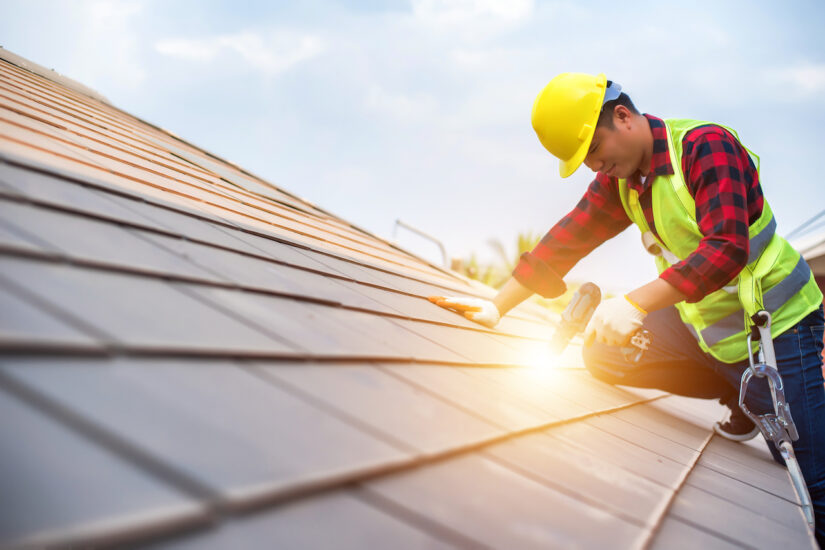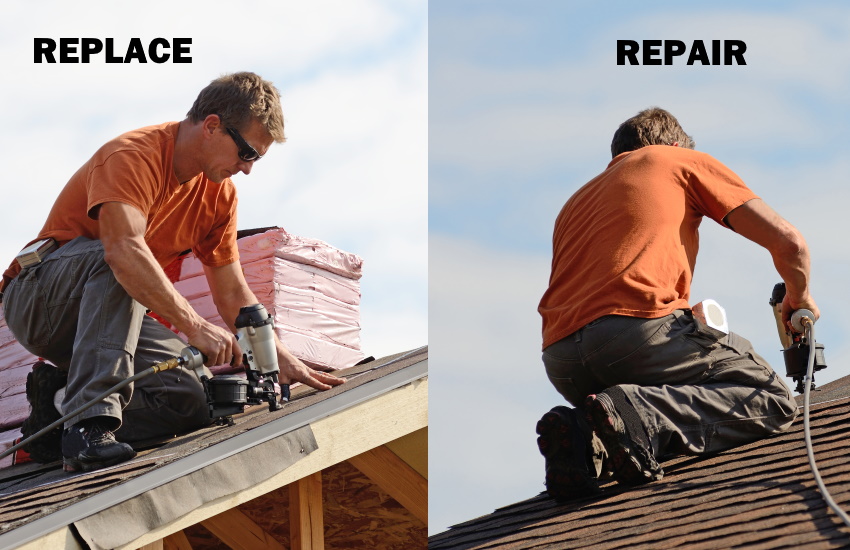Oahu Roofing: Trusted Roofing Solutions for Houses and Businesses
Oahu Roofing: Trusted Roofing Solutions for Houses and Businesses
Blog Article
Comprehending the Different Kinds Of Roof Coverings: A Comprehensive Overview for Homeowners
In the world of homeownership, selecting the appropriate roof covering design is a choice that carries significant effects for both capability and visual appeal. With a range of options-- ranging from the conventional gable to the modern level-- each type provides one-of-a-kind benefits and obstacles that ought to straighten with the house owner's ecological considerations and details needs. Comprehending these distinctions not just aids in making an enlightened choice but likewise affects long-lasting maintenance and power effectiveness. As we explore the complexities of numerous roofing system kinds, it ends up being apparent that one size does not fit all; the best choice may amaze you.
Saddleback Roof
Gable roof coverings, defined by their triangular form, are among one of the most popular roof designs as a result of their simpleness and effectiveness in dropping water and snow. This layout features two sloping sides that satisfy at a ridge, permitting for effective water drainage and lessening the threat of water buildup. The high pitch commonly connected with gable roofing systems enhances their capacity to handle heavy rainfall, making them ideal for various climates.
Along with their sensible benefits, saddleback roofs offer aesthetic adaptability. They can be adjusted to different building designs, from typical to modern homes. The layout can additionally accommodate additional functions such as dormer windows, which improve all-natural light and ventilation in the attic space.
Additionally, gable roofs give enough room for insulation, adding to energy efficiency. Home owners can select from a variety of roof covering products, consisting of asphalt roof shingles, metal, and ceramic tiles, better boosting personalization choices.
Despite their advantages, gable roof coverings may require added assistance in areas susceptible to high winds or hefty snowfall. In general, the saddleback roof continues to be a favored selection due to its blend of functionality, toughness, and visual appeal.
Flat Roofs
Flat roofing systems are typically identified for their minimalist style and functional applications, specifically in commercial and industrial settings (oahu roofing). These roofings feature a virtually horizontal or horizontal surface, which permits simple construction and flexible space usage. While they might lack the visual allure of angled roofs, level roofings supply various advantages, specifically in city environments where making best use of room is important
Among the primary advantages of level roofs is their access. Homeowners can make use of the roof covering space for numerous purposes, such as rooftop yards, terraces, or photovoltaic panel installments. Additionally, flat roof coverings are commonly more affordable to maintain and mount contrasted to their sloped equivalents, as they need less products and labor.
Nevertheless, flat roofs do existing particular difficulties. Appropriate drainage is important to protect against water merging, which can lead to leakages and architectural damages. Hence, selecting high-grade waterproofing materials and regular examinations are critical for making sure durability. Typical materials made use of for flat roof coverings include built-up roofing (BUR), changed asphalt, and single-ply membrane layers, each offering distinctive benefits. On the whole, flat roofs offer as a adaptable and useful option for numerous homeowners and organizations alike.
Hip Roofing Systems
Hip roofings are identified by their sloped sides that converge on top, creating a ridge. This design stands out from saddleback roofs, as all 4 sides of a hip roof slope downwards towards the walls, providing an extra steady framework. The angle of the slopes can vary, enabling adaptability in building aesthetics and functionality.
One of the key advantages of hip roof coverings is their capability to withstand heavy winds and adverse weather. The sloped surfaces allow better water drainage, reducing the threat of leaks and water damages. Additionally, hip roofs supply raised attic area, which can be used for storage and even exchanged habitable locations.
Nonetheless, building a hip roof covering can be a lot more pricey and complicated than easier roof kinds, such as gable roofings. The extra product and labor included in creating the slopes and making certain proper architectural integrity can lead to greater expenses. In spite of these downsides, numerous home owners favor hip roofing systems for their resilience, aesthetic appeal, and possibility for power efficiency.
Mansard Roofing Systems
Mansard roof coverings, often acknowledged by their unique four-sided layout, attribute two inclines on each side, with the lower slope being steeper than the upper. This architectural style, originating from France in the 17th century, is not just cosmetically enticing but useful, as it optimizes the functional room in the top floors of a building. The steep lower incline enables for even more headroom, making it an ideal selection for attics or loft spaces, which can be exchanged living areas.
Mansard roof coverings are identified by their adaptability, fitting different architectural styles, her latest blog from traditional to modern-day. They can be built with various materials, including asphalt roof shingles, slate, or metal, supplying property owners with a series of alternatives to suit their spending plans and choices. In addition, the design enables the combination of dormer windows, improving natural light and ventilation in the top levels.
However, it is important to consider the prospective drawbacks. Mansard roof coverings may call for more maintenance due to the intricacy of their design, and their high slopes can be challenging for snow and rainfall overflow. Generally, mansard roof coverings incorporate elegance with functionality, making them a prominent choice among home owners looking for distinct building functions.
Dropped Roofing Systems
As house owners increasingly look for simpleness and performance in their building layouts, shed roofs have become Going Here a prominent choice. Defined by a solitary sloping airplane, a shed roof presents a minimalist aesthetic that matches numerous home styles, from contemporary to rustic.
Among the key advantages of a shed roof is its uncomplicated construction, which often converts to reduce labor and material expenses. This design permits effective water drain, minimizing the risk of leakages and water damage. Additionally, the vertical slope supplies ample space for skylights, improving natural light within the inside.
Lost roof coverings also supply adaptability in regards to use. They can be successfully integrated into enhancements, garages, or outside frameworks like structures and sheds. Furthermore, this roofing system design can accommodate different roof covering products, including metal, asphalt shingles, or even eco-friendly roof coverings, aligning with green efforts.
Nonetheless, it is vital to consider local environment problems, as hefty snow loads might demand changes to the roof's angle or structure. Overall, shed roof coverings present a useful and cosmetically pleasing choice for home owners looking to make the most of functionality without endangering style.
Verdict


Gable roof coverings, defined by their triangular form, are amongst the most preferred roof covering styles due to their simpleness and effectiveness in shedding water and snow. oahu roofing. The high pitch generally linked with gable roofings enhances their capacity to deal with heavy precipitation, making them suitable for various environments
While they may lack the Learn More Here aesthetic appeal of pitched roofing systems, flat roof coverings use countless advantages, particularly in metropolitan environments where optimizing room is crucial.

Report this page